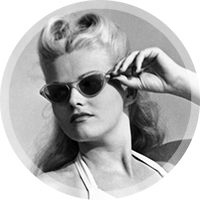

In a nest of odd and random things bound inexplicably together as a makeshift museum and all but hidden in the hills of Wisconsin, Esmeralda the mechanical fortune teller is almost normal. She stands at the end of a dark artificial street, secure in her wood and glass box, as motionless as Snow White, but just as confident in her place in her story. People know her, you see. At least, they know what she represents. She’s part of a tradition, something visitors respond to even if they’ve never encountered one of her kind before. And, chances are, they haven’t, since most of her kind has disappeared over time. This particular place, however, exists out of time, and, now when supplicants approach Esmeralda, the correct motions come to them from some collectively remembered instinct. Drop a token, wait for her to shudder to life, blink against the flickering lamp on her table, watch her thin fingers wave over her prophetic cards, and put out our own hands to catch the white cards printed with small blue type that she releases to us. Our fortune, foretold. Automatically.
Many places made by humans manage to transcend that limited definition, but it’s likely that few do it as weirdly or mystifyingly as the House on the Rock does. There, Ms. Esmeralda—her proper title, as communicated in a plastic plaque beneath her window, proving in some ways she is entirely modern—is among her own strange kind. Among other mechanized mannequins, orchestras of instruments that play themselves, families of dolls with deep eyes, and a massive, brilliantly-lit carousel that spins endlessly, unridden. Among bits of shipwrecks, circus panoramas, old cars, cameras and carriages, and ancient calliopes that still burble when paid attention to. The House on the Rock began as one man’s home and personal eclectic collection. Now it exists as the platonic ideal of the American roadside attraction and a temple to the bizarre and forgotten.
Something lives at the House on the Rock. It’s hard to say exactly what, but you can be certain that it’s there. Maybe one of Neil Gaiman’s old gods once came for a divine congregation and never left. Maybe animate creatures just as odd and random as the collected inanimate ones gravitated towards it and made homes in its shadows or behind its doors that don’t open. Maybe from the fertile ground made of stubborn inclination and indulged interest something new grew, naturally, feeding off of the delight and intrigue and occasional apprehensiveness of the people who walked over that ground. Whatever the case, the House on the Rock has little explicit reasoning for its own existence and its chief attraction is the fact it denies it needs such reasoning at all. This is a place where no one need justify or apologize for what one likes or is fascinated by or wants to do, and, in that created space, potential flourishes.
Which is what makes it the perfect home for Ms. Esmeralda. Here, she is not a mere curiosity or reminder of a carnival age gone by. Here, she has her rightful spot as prophetess, as someone to be believed in. Her eyes are permanently cast down, her box dimmed when she’s not in action, but, still, few people walk past her. She stands at the intersection of suspended disbelief and curious hope, and in the House on the Rock all lines blur just enough to make something extraordinary possible. And so tokens get dropped and fortunes get told. Maybe sometimes they get believed. Esmerelda understands possibility and she understands context, and she knows who is the arbiter of what will truly happen next. To prove it, she adds at the end of each card she gives: “Drop another coin in the slot and maybe my next prophecy will suit you better.”
Then she relaxes, sits back in the dark, and waits for the next opportunity to speak.